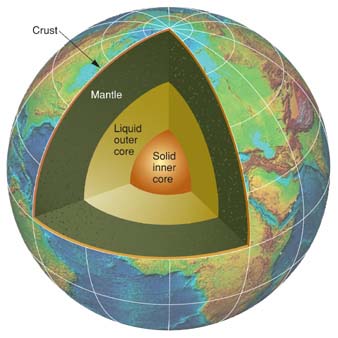Asteroid-sized balls of magma may have formed Earth and its rocky siblings
 London, July 21 : A new research says that asteroid-sized balls of magma hurtled through our infant solar system, and spray from their many collisions provided much of the raw material that formed Earth and its rocky siblings.
London, July 21 : A new research says that asteroid-sized balls of magma hurtled through our infant solar system, and spray from their many collisions provided much of the raw material that formed Earth and its rocky siblings.
According to a report in New Scientist, this is according to a new take on an old theory that challenges the notion that the solar system started out as a placid sea of dust motes which simply clumped together to form planets.
The early family tree of our solar system''s rocky planets features tiny glassy spheres called chondrules, found today inside ancient meteorites.
The origins of chondrules, which are typically about a millimetre across, are shrouded in mystery.
They make up much of the material preserved in meteorites that were formed about 2 million years after the solar system began and are thought to have clumped together to form asteroid-size planetesimals, which in turn agglomerated to make Earth and its peers.
Chondrules'' glassy composition and spheroidal shape show that they were once molten.
According to the popular view, they formed when dust grains in the nebula surrounding the infant sun were suddenly heated, perhaps when cosmic lightning or shock waves shot through the nebula.
But, calculations on the retention of sodium by the chondrules suggest they formed in dense swarms.
This is difficult to reconcile with the melting of dust motes in a nebula, which are expected to be widely spaced.
Now, Ian Sanders of Trinity College Dublin in Ireland says another formation scenario, involving collisions between asteroid-sized balls of magma - kept molten through their high radioactivity - offers a better explanation.
Decay of radioactive isotopes today helps to keep the cores of relatively large bodies like Earth molten.
Sanders argues that the greater abundance of radioactive material in the fledgling solar system means that if objects larger than 30 kilometres across formed, they would have melted through.
Collisions between such magma balls would breach their thin crusts of solid rock, spraying molten material into space, where the droplets would quickly cool to form chondrules.
Collisions between magma balls would breach their thin crusts and spray material into space
"It puts a completely different slant on what happened in the early solar system in the first 2 million years," Sanders said.
That is the period when chondrules formed, based on measurements of key isotopes within them.
According to Conel Alexander of the Carnegie Institution of Washington DC, the high density of droplets possible in plumes ejected from magma balls could explain his team''s results. (ANI)